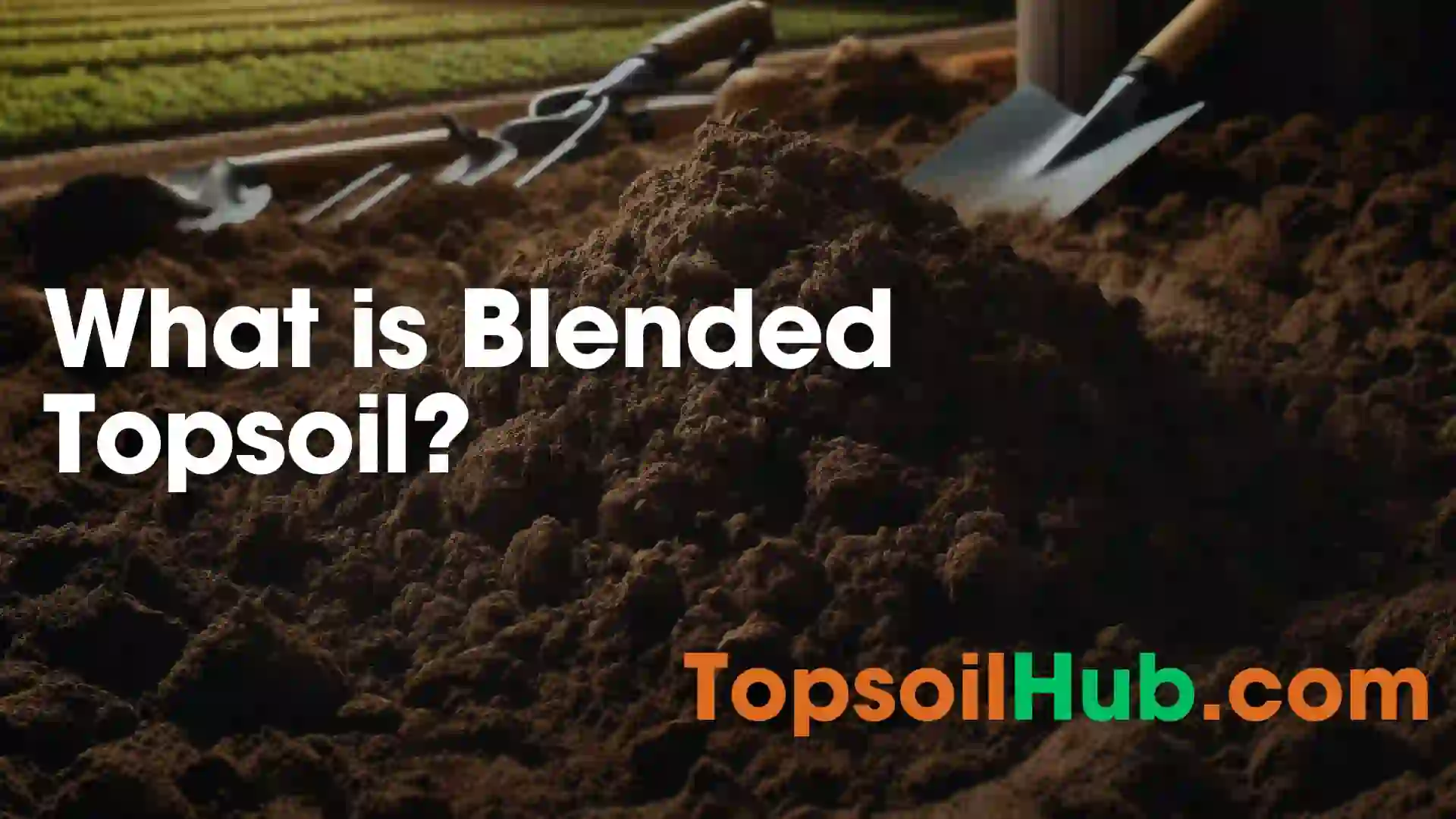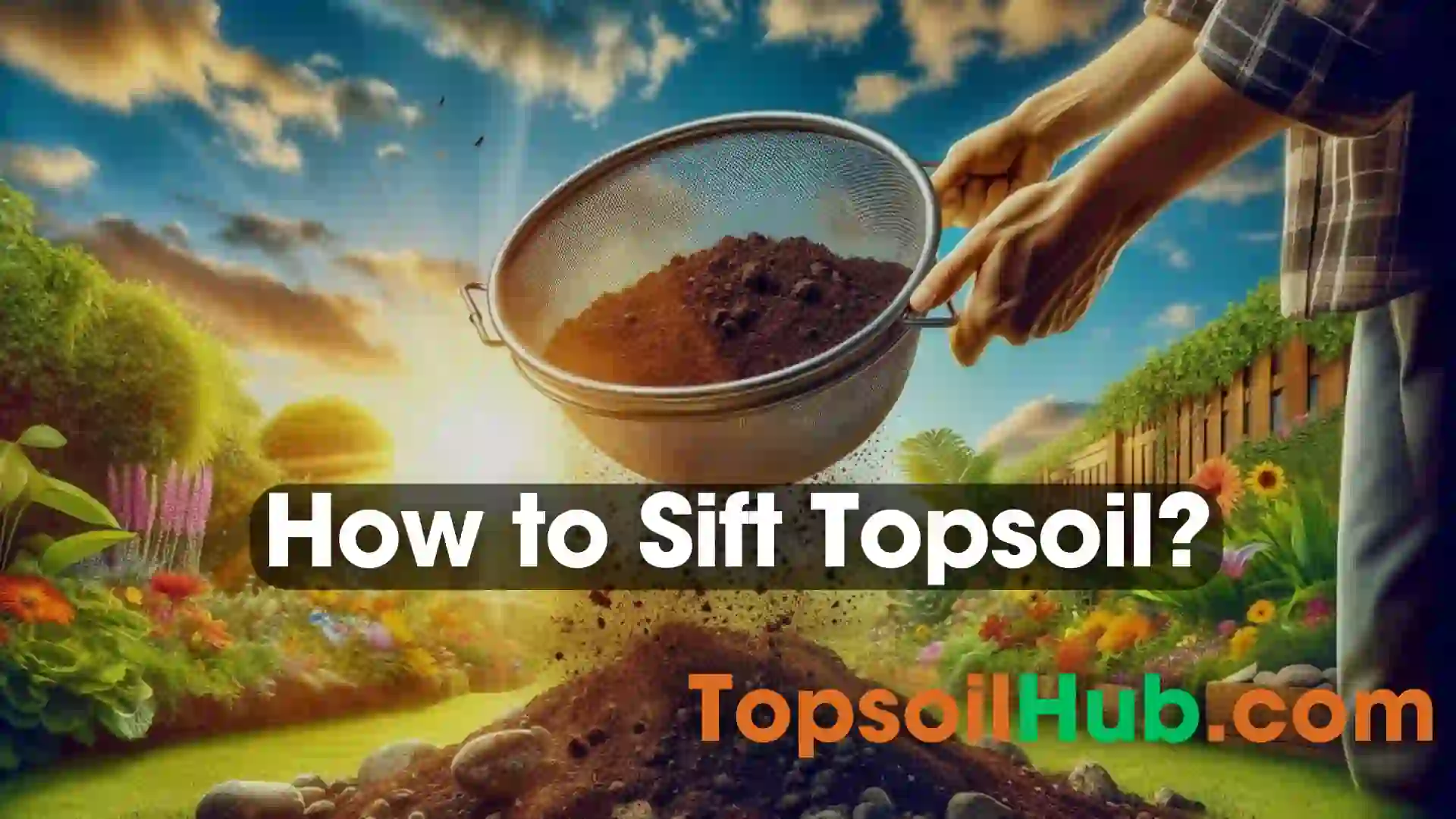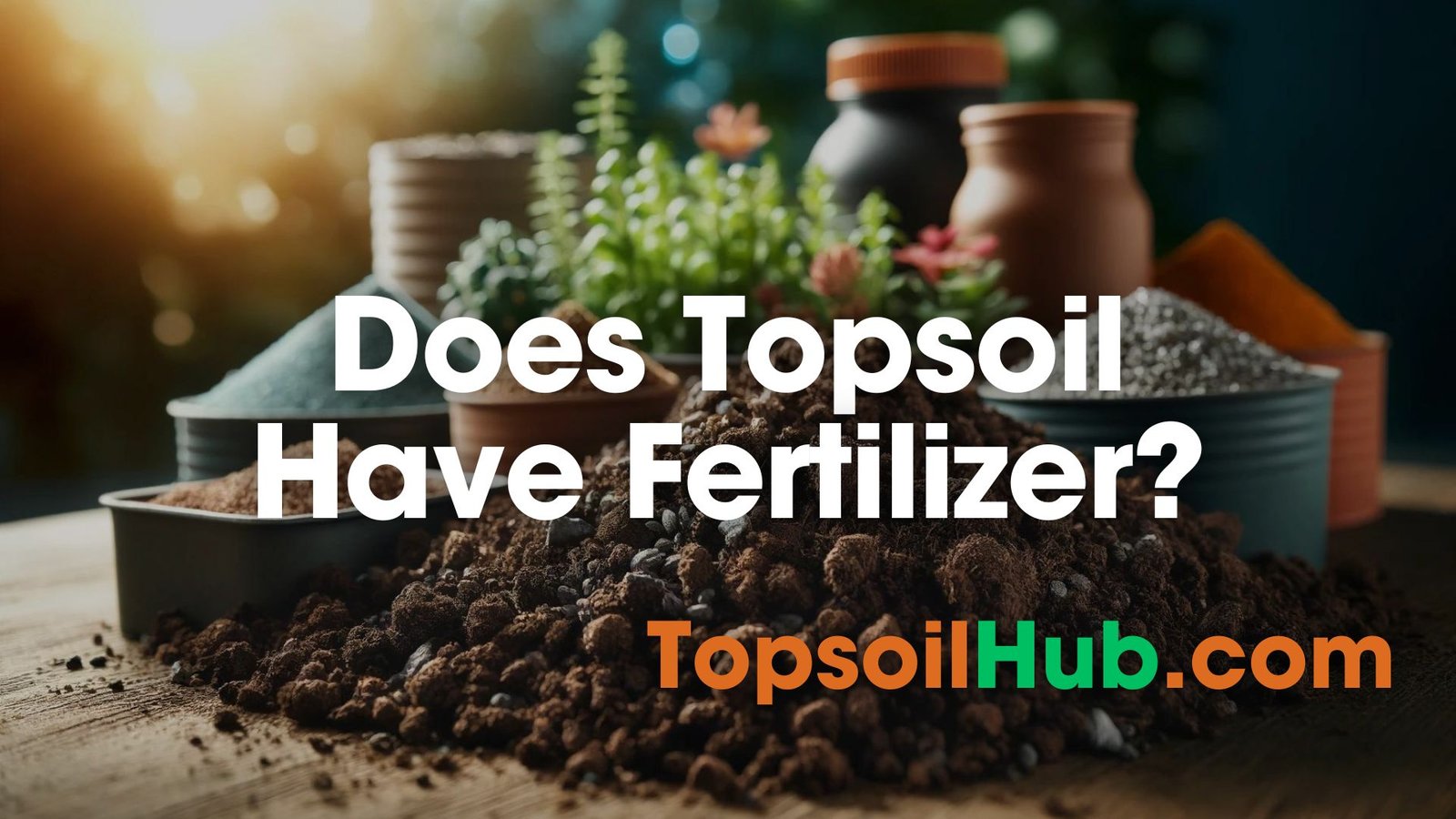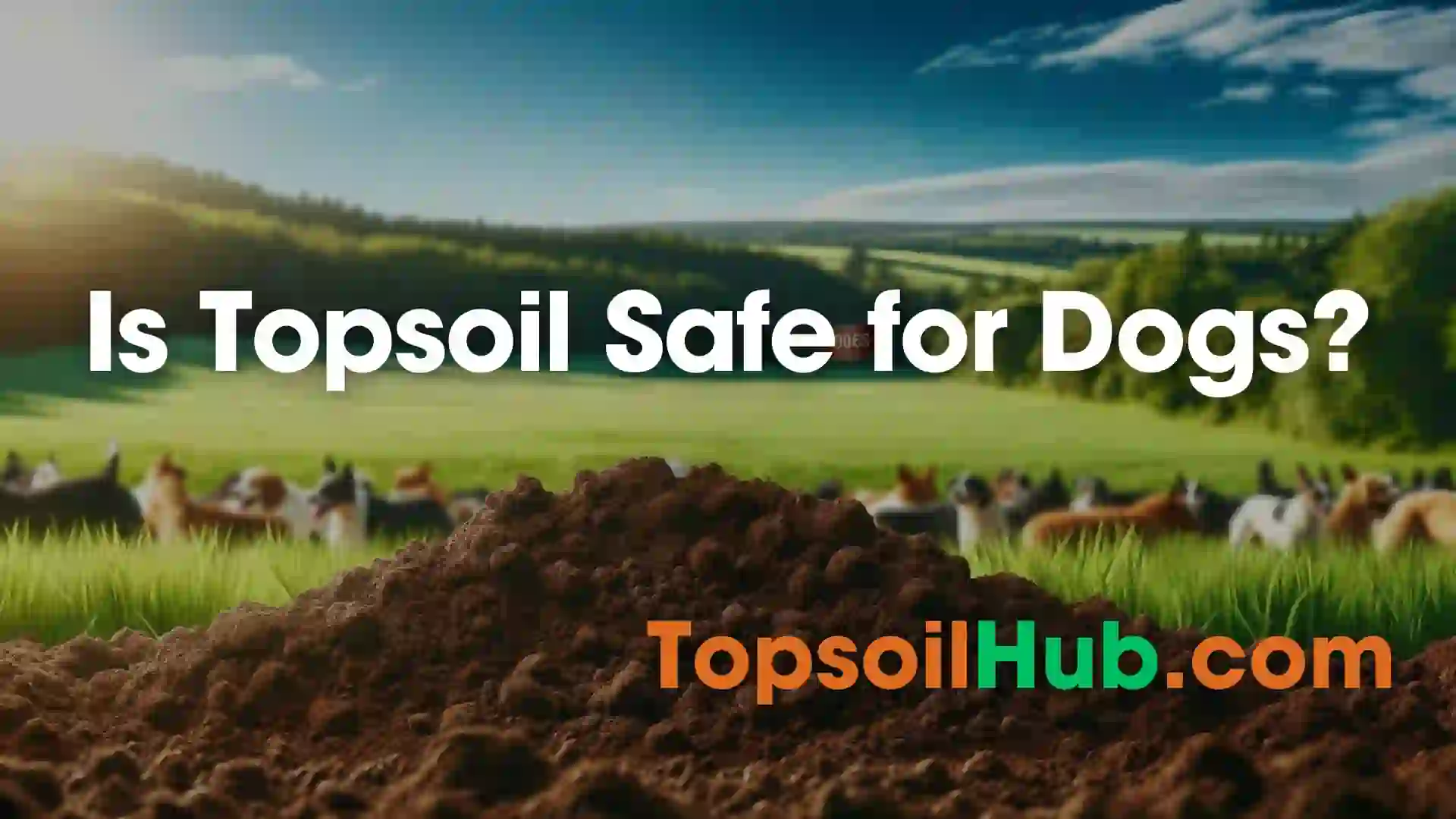What Materials Combined to Form the Topsoil?
Have you ever looked at a garden and got curious about what makes plants grow so well? The secret is in the dirt beneath our feet. This special dirt is called topsoil. It’s the top layer of soil that helps plants grow strong and healthy.
In this blog post, you’ll learn about what’s in topsoil, what materials combined to form the topsoil, and why it’s so important for plants and the food we eat. Let’s get started!
What Materials Combined to Form the Topsoil? (Quick Answer)
The materials that combine together to make topsoil are tiny bits of broken-down rocks, rotted plants and animals, water, air, and tiny living things. These all work together over a long time to create rich, dark soil on top that helps plants grow well. The rock bits give the soil minerals, while the rotted stuff adds plant food.
Tiny creatures like worms and germs help break things down and move nutrients around in the new topsoil. This special mix of stuff makes a healthy home for plants to grow their roots and get what they need.
Components of Topsoil (Detailed)
Organic Matter
Topsoil is rich in organic matter, which includes decomposed plants and animals. This material is essential for making soil fertile, providing plant growth nutrients. It also helps soil hold onto water and air, making it healthier for plants.
Organic matter is crucial for keeping the soil lively and productive, supporting various plant life in gardens and on farms. It also acts as a sponge, helping the soil absorb and retain moisture, which is vital for plant health during dry periods.
Mineral Particles
The mineral content of topsoil includes sand, silt, and clay, which come from broken-down rocks. These minerals help determine how the soil feels and how well it can support plants. They influence how much air and water the soil can hold, which affects how well plants can grow.
A balanced mix of these minerals makes the soil stable and fertile, supporting strong plant growth. This mix also helps with drainage, preventing water from pooling, which can damage plant roots.
Water and Air
Water and air are critical in topsoil because they fill the spaces between soil particles. These spaces help roots get the air and water they need to grow. Keeping a good balance between water and air is important for healthy plant growth.
Too much water can drown roots, and not enough air can make it hard for roots to breathe. Managing this balance helps ensure plants are healthy and grow well, making the soil more productive.
Soil Microbiome
The soil microbiome comprises bacteria, fungi, and other tiny organisms that help keep the soil healthy. They break down organic matter and turn it into nutrients that plants can use. These microorganisms also help build the structure of the soil, making it better for plant roots.
Their activity keeps the soil fertile and ready for planting, playing a key role in how well a garden or farm can produce. They essentially feed and protect the plants by creating a nutrient-rich environment that supports strong growth.
Soil Formation Processes
Parent Material and Weathering
Topsoil begins with the breaking down of rocks into small mineral particles, a natural process called weathering. This happens due to environmental factors such as rainfall, changes in temperature, and the activity of plants and animals.
These minerals are essential for soil fertility and provide a solid foundation for topsoil development. Weathering is crucial because it sets the stage for other soil formation processes by creating raw materials that blend with organic substances to form fertile soil.
Biological Contributions
Living organisms greatly enhance soil formation. Plants contribute by dropping leaves and other organic materials, which enrich the soil, and their roots break up the soil, improving its structure and allowing air and water to move through it more effectively.
Animals, particularly earthworms, mix and aerate the soil, helping to decompose organic material and release nutrients. This biological activity not only enriches the soil but also helps maintain its fertility and structure, making it a better environment for new plant growth.
Time and Climate Factors
Soil formation is a slow process influenced heavily by the local climate. Factors such as temperature and rainfall affect how quickly rocks weather and how much organic material accumulates. These climate conditions play a significant role in determining the speed and quality of soil development.
Over time, these factors work together to build up layers of rich, fertile topsoil that can support a wide variety of plant life. Each year adds a small amount to the soil’s depth and richness, contributing to a continuously evolving and improving ecosystem.
Impact of Human Activities
Agricultural Impact
Farming significantly affects topsoil, particularly through practices like plowing, irrigating, and applying chemicals such as fertilizers and pesticides. These activities are essential for crop production but can harm the soil, leading to compaction, nutrient loss, and increased erosion.
This deterioration makes the soil less effective at supporting crops and can lead to reduced agricultural yields over time. Understanding and addressing these impacts is crucial for developing farming methods that are sustainable and do not degrade soil health.
Urbanization and Industrialization
Urban growth and industrial activities often damage topsoil. Construction and industrial operations tend to strip away or pollute the top layer of soil, which diminishes its quality and reduces its availability. This damage not only affects plant growth but also impairs the soil’s ability to manage water, leading to increased runoff and potential flooding.
Preserving topsoil in urban and industrial areas is essential for maintaining environmental quality and reducing the negative impacts of development.
Conservation Policies
To combat soil degradation, various global and national policies have been implemented to protect topsoil by regulating land use and promoting sustainable practices. These policies aim to ensure that soil remains healthy and capable of supporting agriculture and natural ecosystems.
They encourage practices that reduce harmful farming techniques, promote land rehabilitation, and support sustainable development. Implementing these policies effectively is key to preserving soil health and ensuring it continues to be a vital resource for future generations.
Basic Soil Conservation Techniques
No-Till Farming
No-till farming means growing crops without turning the soil over with plows. This technique keeps the soil structure from being disturbed, helps reduce soil erosion from wind and water, and improves the soil’s ability to hold onto water.
Not disturbing the soil helps protect the living organisms that enrich the soil, making it healthier and more fertile. This method is not only good for the soil but also saves farmers time and money by cutting down on the need for heavy machinery.
Use of Cover Crops
Planting cover crops like clover or rye between the seasons of regular crops helps protect and enhance the soil. These plants cover the soil, which shields it from being eroded by rain and wind.
As they decompose, covering crops adds important organic matter back to the soil, improving its structure and water-holding capacity. This process also promotes a healthy environment for beneficial microbes that aid in plant growth.
Crop Rotation and Diverse Planting
Rotating crops and planting a variety of species helps keep the soil healthy and productive. This approach prevents the buildup of pests and diseases that can occur if the same crops are grown repeatedly in the same soil.
Different crops contribute differently to the soil, some adding nutrients while others might use up fewer nutrients, helping to maintain a balanced soil environment.
This variety also supports a wider range of beneficial insects and soil organisms, which contribute to the overall health of the farm.
Erosion Control Measures
Implementing erosion control methods like contour farming, terracing, and buffer strips can significantly reduce soil loss. Contour farming aligns planting with the natural contours of the land, slowing down water runoff and preventing soil erosion. Terracing transforms slopes into a series of steps, keeping water from rushing off too quickly and taking soil with it.
Buffer strips, areas of grass or other plants grown between crops and waterways, help catch soil and pollutants before they can enter water sources, protecting both soil and water quality. These techniques are crucial in areas prone to erosion, preserving soil integrity and ensuring sustainable land use.
Conclusion:
In conclusion, topsoil is made from many things mixed together. Tiny bits of rock, dead plants and animals, water, air, and small living things all combine over time. This special dirt on top helps plants grow well. People’s actions, like farming and building cities, can hurt topsoil. But there are ways to protect it, like planting different crops and not digging up the soil too much. Taking care of topsoil is very important for growing food and keeping nature healthy.
Ready to make a difference? Start your own mini garden today! Whether it’s a small pot on your windowsill or a patch in your backyard, you’ll see firsthand how important good soil is. And next time you buy food, try choosing from local farms that care for their soil. Every small step helps protect the earth beneath our feet!







